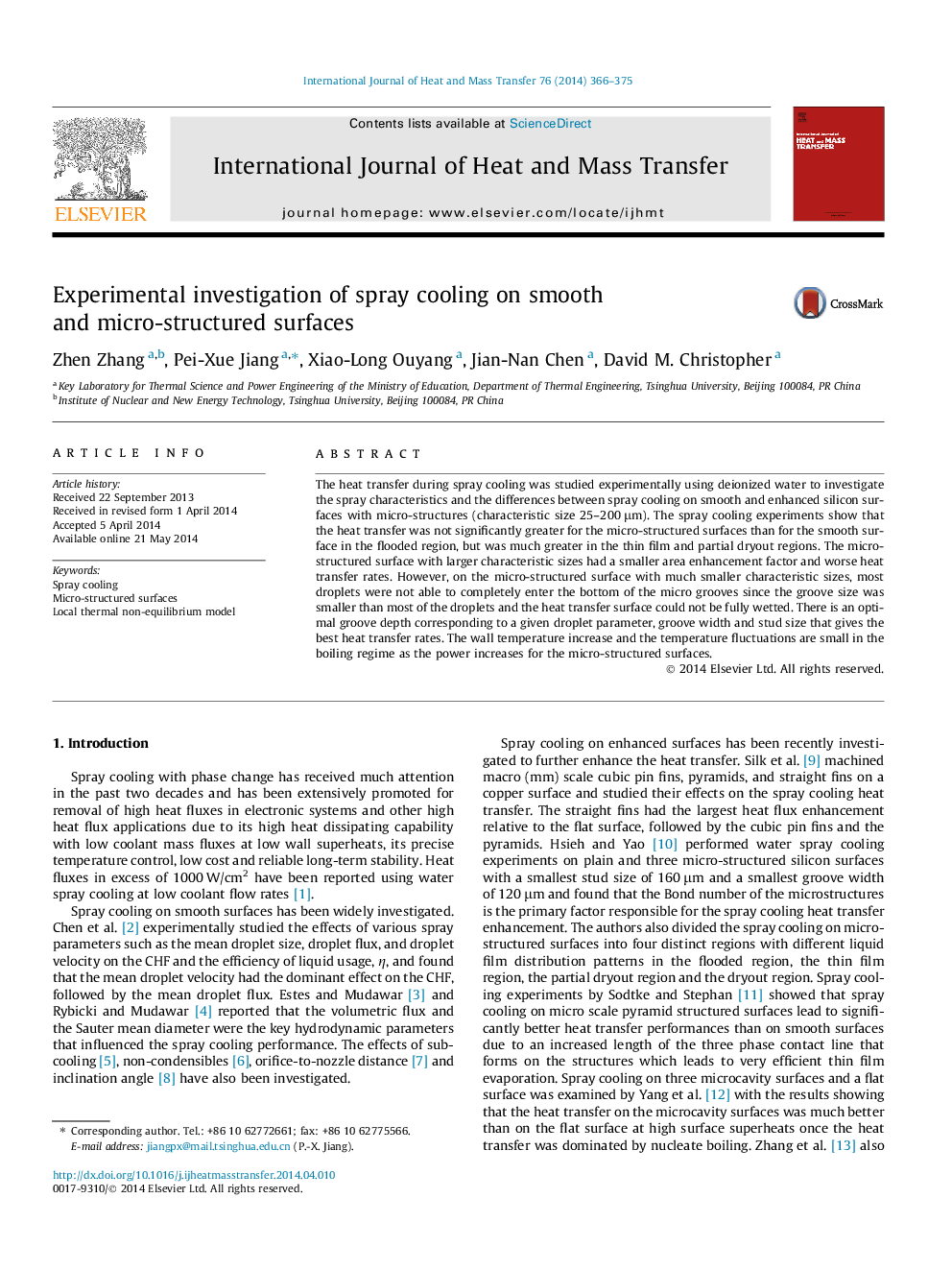| Article ID | Journal | Published Year | Pages | File Type |
|---|---|---|---|---|
| 7056794 | International Journal of Heat and Mass Transfer | 2014 | 10 Pages |
Abstract
The heat transfer during spray cooling was studied experimentally using deionized water to investigate the spray characteristics and the differences between spray cooling on smooth and enhanced silicon surfaces with micro-structures (characteristic size 25-200 μm). The spray cooling experiments show that the heat transfer was not significantly greater for the micro-structured surfaces than for the smooth surface in the flooded region, but was much greater in the thin film and partial dryout regions. The micro-structured surface with larger characteristic sizes had a smaller area enhancement factor and worse heat transfer rates. However, on the micro-structured surface with much smaller characteristic sizes, most droplets were not able to completely enter the bottom of the micro grooves since the groove size was smaller than most of the droplets and the heat transfer surface could not be fully wetted. There is an optimal groove depth corresponding to a given droplet parameter, groove width and stud size that gives the best heat transfer rates. The wall temperature increase and the temperature fluctuations are small in the boiling regime as the power increases for the micro-structured surfaces.
Related Topics
Physical Sciences and Engineering
Chemical Engineering
Fluid Flow and Transfer Processes
Authors
Zhen Zhang, Pei-Xue Jiang, Xiao-Long Ouyang, Jian-Nan Chen, David M. Christopher,
